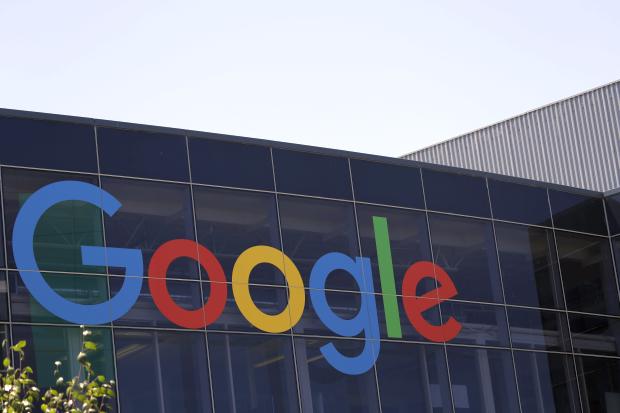Google spikes free-article requirements on publishers

This photo, taken July 19, 2016, shows the Google logo at the company’s headquarters in Mountain View, California. Google said Monday, Oct. 2, 2017, it is ending its so-called “first click free,” a policy loathed by many publishers and media because it required a limited amount of free content from them before readers could be subjected to a paywall. (Photo by MARCIO JOSE SANCHEZ / AP)
NEW YORK—Google is ending a decade-old policy that required publishers to provide some free stories to Google users —though it’s not clear how many readers will even notice, at least for the moment.
Publishers had been required to provide at least three free stories a day under the search engine’s previous policy, called “first click free.” Now they have the power to choose how many free articles they want to offer readers via Google before charging a fee, Richard Gingras, vice president of news at Google Inc., wrote Monday in a company blog post .
The goal is to help publishers build up digital subscriptions, an imperative for many media outlets that pay large sums for news production but are starved for advertising revenue.
Google’s previous approach had let readers skirt paywall policies by typing a headline into Google and getting access to a story without having it count against a monthly free article limit, said Kinsey Wilson, an adviser to New York Times Co. CEO Mark Thompson.
IMPACT ON READERS
Many online readers may not notice a change overnight unless they visit a particular site several times a month without subscribing. And not every publication blocks users from reading stories with a paywall. Newer digital-only outfits tend not to.
Newspaper companies that do cut off readers tend to do so after a certain monthly allotment of free stories. The Times offers 10 free articles, for example; the Boston Globe, two.
Newspaper companies are trying to cope with steep declines in print-ad revenues as advertising has moved online. Google and social media companies like Facebook and Twitter are powerful drivers of traffic for publishers. But mandated freebie articles can complicate publishers’ attempts to bolster their paid-subscriber base.
News Corp.’s Wall Street Journal had turned off “first click free” for its four main sections in January. It then lost half its Google traffic to articles, said spokesman Steve Severinghaus. Google would demote a publisher’s content if they didn’t use first click free, but now says that won’t happen anymore.
Jason Kint, the head of the Digital Content Next media trade group, said he expects Google’s change will lead to news sites enabling more subscription models, making it harder down the road for web users to gorge themselves on stories from a particular outlet without paying for it.
TURNING TO SUBSCRIPTIONS
Subscription revenue is increasingly important for newspaper publishers. Print-ad revenue continues to shrink, and Facebook and Google are gobbling up most digital ad revenue. Research firm eMarketer says the two companies will take in 63 percent of U.S. digital ad dollars this year.
Facebook, too, is working on a way for news articles to charge readers for articles they share and read on the social network.
News outlets have become more aggressive at challenging the Silicon Valley giants. In July, news outlets sought permission from Congress for the right to negotiate jointly with Google and Facebook, given the duo’s dominance in online advertising and online news traffic.
In a statement Monday, News Corp. CEO Robert Thomson said Google’s change would be good for journalism if “properly introduced.”
In months of testing with Google, reducing those free clicks from three to zero “generally improved” subscription rates, the New York Times’ Wilson said. But he added the Times continues to assess whether to actually reduce the number of free clicks now that it can. He said it was “not simply a mechanical decision” because the Times’ mission was in part to make sure its news was available to a wide audience and to set the news agenda.
Google says it made the changes after feedback from and experiments with publishers. The company also says it wants to make subscribing to publications a more streamlined process and says it is working on ways to use its artificial intelligence capabilities to help publishers find new subscribers. /jpv